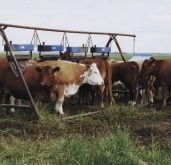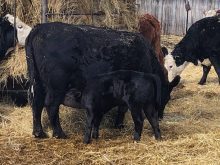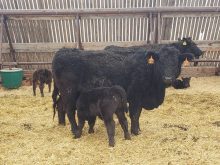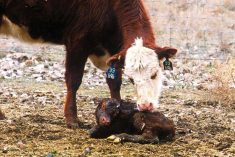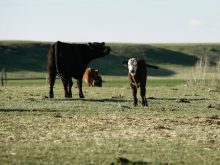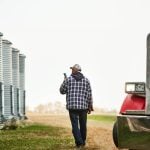There’s huge talk about the shortage of veterinarians — especially large-animal, but also small-animal and emergency animal care.
There was a recent announcement that the University of Calgary’s Faculty of Veterinary Medicine (UCVM) will raise the number of training seats to 100 from the current 50, when an expansion is completed next year.
I would suggest as producers raising cattle or other production animals that you figure out strategies to help your situation. This will vary depending on your geographic location and the types of services you need.
Read Also

Harvest wraps up and fall work begins
At the Eppich famly ranch in western Saskatchewan, the fall harvest was successful with few breakdowns, cows and calves have been sorted and a new tractor has arrived
The biggest apparent shortage appears during calving season, with an increase in emergencies when veterinarians are busy doing herd work.
Having a good relationship with your local veterinary clinic and all veterinarians involved is a start. Herd medicine can be scheduled, but for individual cases, and emergencies such as c-sections, a haul-in facility is a great advantage to you and them, in terms of an economic and time commitment for the veterinarian.
For c-sections, routine procedures such as calf examinations, postmortems in many cases, prolapses and even for the few semen evaluation scenarios, a haul-in facility allows for cases from all directions. Larger clinics will have veterinarians out on herd work as well as someone in the clinic on most days.
For veterinary emergencies, find a clinic that performs the service needed — and be prepared to bring the animal to that clinic. That keeps the veterinarians efficient and allows them to serve a wider area for emergencies.
I am more familiar with Alberta, but slowly, over time, regional clinics are getting bigger, with more veterinarians employed and more backup lab facilities becoming the norm. They also employ a fair number of veterinary technicians with an expanding scope of practice so they can do more things such as BSE testing under supervision and in some cases pregnancy checking if they have the formal training.
I would like to see their scope expanded even more, depending on the talent of the technician and the mentorship they have been given.
I know it is tough in some areas that over time have had clinics shut down. Usually herd health work, if organized, is booked in and veterinarians are starting to cover a certain area on a certain day, having producers collaborate and then using telemedicine where possible.
Females are the dominant gender in the profession now, making up 80-90 per cent of graduates, and I have met many who can do anything or more than I did in practice. I have seen many a time what they may lack in brute strength they make up for in technique, ingenuity and on occasion asking for some help. Some clinics send technicians with veterinarians to speed up the process, help handle the setup and cleanup, and work as a team.
Keep in mind, for herd work, that your facilities may play a big role. Quicker processing, semen testing and pregnancy checking may mean a lower price but also more time for you. I can’t say more how a good tub handling system, leading to a hydraulic chute and palpation cage, makes things go smoother and quicker. You also do not lose patience and both you and your veterinarian are not exhausted at the end of the day. Try and group-schedule in an area, and clinics should do the same, to clump calls together.
Some vets may be able to provide telemedicine if they know your herd and you can provide a short video or series of pictures. There should be a charge for this, or it should be worked into your herd agreement, but it still saves you time and money.
If you are in a specific geographic area short of veterinarians, this idea may take time to develop, but options may include creating a community clinic, or a scholarship to defray tuition for vet students that ties them to come back to a specific area. Bigger clinics, in some cases, have satellite clinics that feed into a main clinic. Some partially retired vets can be coaxed back into practice, even if just to handle the telemedicine.
The bottom line is the need to work toward a service that is sustainable and fulfilling for the young veterinarian going forward. It doesn’t accomplish anything to get belligerent with a clinic that refuses to go out of an area away from its own clients to attend to your calving emergency when you could bring it in to a haul-in clinic.
It may pay to ask your herd veterinarian what you are supposed to do in an emergency. In Alberta, at least, veterinary bylaws say you need to provide emergency service or have arrangements for veterinary services available. I am seeing areas in B.C. co-ordinating shared calls between several clinics. The service area is bigger, but the sharing of on-call resources keeps veterinarians from burning out and leaving the profession earlier. Those veterinary services could very well include hauling into an emergency clinic.
I hope calving season goes well and you don’t need many of the calving and prolapse emergency supports this spring.
All large veterinarians try hard to help you prevent these emergencies with better breeding selection, but they still can happen and still need attention. Some can wait until the next day, but sometimes the decision is not an easy one.
There is also an answering service out there that employs veterinary technicians to help decide which emergencies need to be dealt with now and which can be triaged till a later date. Progress is being made, and everyone can do their part.




